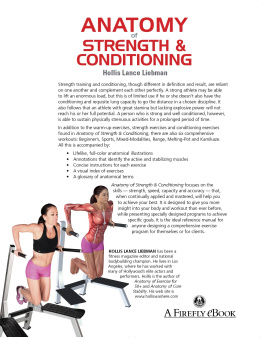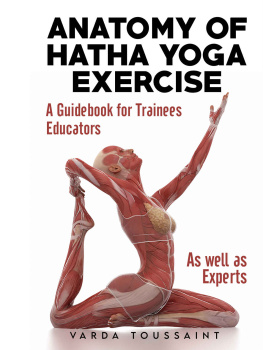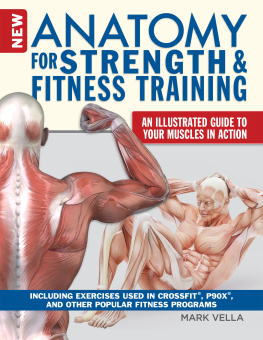




Note
While every effort has been made to ensure that the content of this book is as technically accurate and as sound as possible, neither the author nor the publishers can accept responsibility for any injury or loss sustained as a result of the use of this material.

Published by Firefly Books Ltd. 2014 Copyright 2014 Moseley Road Inc. All rights reserved. No part of this publication may be reproduced, stored in a retrieval system, or transmitted in any form or by any means, electronic, mechanical, photocopying, recording or otherwise, without the prior written permission of the Publisher.
Publisher Cataloging-in-Publication Data (U.S.) A CIP record for this title is available from the Library of Congress
Library and Archives Canada Cataloguing in Publication A CIP record for this title is available from Library and Archives Canada Published in the United States by Firefly Books (U.S.) Inc. P.O.
Box 1338, Ellicott Station Buffalo, New York 14205 Published in Canada by Firefly Books Ltd. 50 Staples Avenue, Unit 1 Richmond Hill, Ontario L4B 0A7 Printed in China Conceived, and produced by Bloomsbury Publishing Plc 50 Bedford Square London WC1B 3DP www.bloomsbury.com For Moseley Road Inc. President: Sean Moore; General Manager: Karen Prince; Art Director: Tina Vaughan; Production Director: Adam Moore; Editors: David & Sylvia Tombesi-Walton; Designer: Simon Murrell; Photographer: Fine Arts Photography; Models: Miguel Carrera, Tara DiLuca Digital book by Firefly Books Ltd. Digital layout design by George Walker
CONTENTS
Warm-Up Exercises
Stretching Exercises
Strength Exercises
Conditioning Exercises
Workouts
INTRODUCTION
The aim of strength and conditioning training is to enable you not only to handle a heavier load but also to carry that load in a better way. This is achieved by improving your aerobic capacity through the grouping together of various types of exercise. In plain speak, we are talking about enabling greater performance through increased strength, speed, capacity and accuracy.
It is only through the continual application and eventual mastery of these four skill sets that an athlete can achieve his or her best.
Strength training and conditioning, though different in definition and result, are reliant onone another and complement each other perfectly. A strong athlete may be able to lift an enormous load, but this is of limited use if he or she doesnt also have the conditioningand requisite lung capacity to go the distance in a chosen discipline. It also follows that anathlete with great stamina but lacking explosive power will not reach his or her full potential. Generally speaking, a bigger muscle tends to be a stronger muscle; however, one need not be overly developed to showcase unparalleled strength. This is because the best, most rounded sporting performance depends on the application of four major elements: strength, speed, capacity and accuracy.
What is Strength Training?
In its simplest terms, strength training can be definedas the act of movinga weight from point Avia point B to point C.
What is Strength Training?
In its simplest terms, strength training can be definedas the act of movinga weight from point Avia point B to point C.
Although straightforward, this pathway requires progressively moreeffort, forcing the muscle to work increasingly hard. Performance in strength training can be compared to that of a coiled spring first, there is a slow winding or cranking of the muscle; and then a quick, explosive release.A very obvious example of this is the Barbell Power Clean and Jerk (see page 38), in whichthe barbell is lifted first off the floor and tothe chest (the movement from A to B), then from the chest to an overhead position (the movement from B to C).A few repetitions of this type of muscular contraction will result in increased anaerobic output and muscular power. Strength training usually calls for the assistance of a group of muscles to complete a multi-jointed movement. The squat, for example perhaps the ultimate exercise for lower-body strength is widely considered a thigh exercise; however, it also uses the glutes, hamstrings and core muscles to stabilize the body properly during motion and to fire during execution. This synergistic combination of opposing body parts working together to complete a given movement is an important difference between strength training and conventional bodybuilding. In the latter, the tendency is to isolate and focus on one muscle, minimizing help from neighboring ancillary tissue in order to keep tension primarily on the target.
A bodybuilder wishing to work the biceps, for example, would perform seated dumbbell curls, because the seated position ensures that assistance from the lower back is kept to a minimum. Strength training also differs from bodybuilding because its focus is not on increasing muscle tissue and bulk, refining proportions or creating symmetry; it is not about how big your chest or arms are or the compactness of your waist. The real goal of strength training is quite simply increased strength and muscular power. Any type of strength-focused exercise results in the muscles being broken down through microscopic tears that occur during muscular overload. Bodybuilders often train to the point of absolute muscular failure (that is, the inability to complete a movement due to inadequate strength), because the effort of the muscle to repair itself contributes and leads to increased muscle mass. However, since the goal in strength training is increased power rather than bulk, it is not necessary to lift the maximum weight you can manage for the highest number of repetitions you can achieve.
As a result, recuperation time is shortened, which means that you can train more often and see results more quickly. Nevertheless, you should avoid over-training or training to the point of excessive body fatigue and lethargy. Aim to incorporate strength training into your regime no more than threeor four days per week, focusing on correct form and execution rather than on marathon sessions. Throughout this book, the number of repetitions performed in strength exercises is high enough for you to test and improve upon your current strength levels, but low enough not to exert too much stress on your body.
What is Conditioning?
Conditioning, a type of training based on constant motion performed for ever-increasing amounts of time, is less about strength and more about fitness. This aerobic activity is usually executed at high speed.
Next page
















